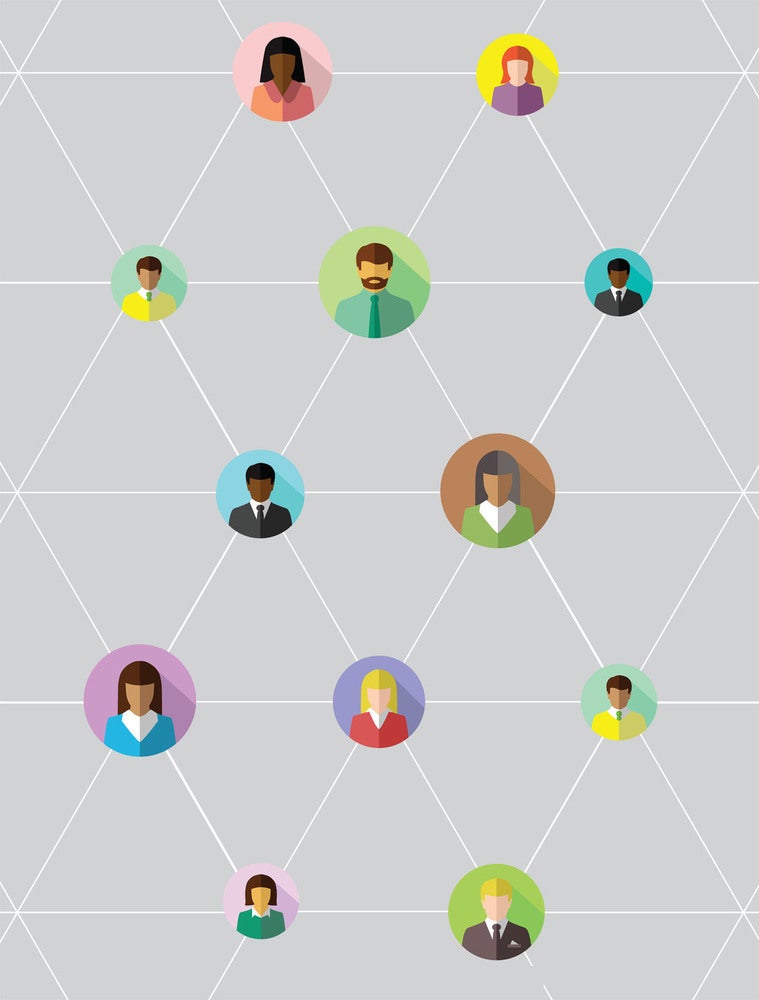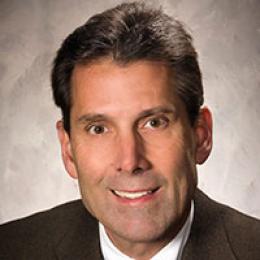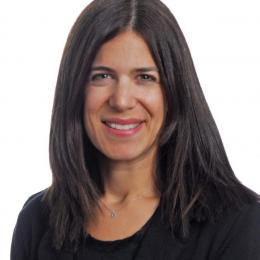
CHEAT SHEET
- Lacking diversity. In the United States, less than 12 percent of general counsel are minorities, and only 22 percent of women are law firm partners, law school deans, or general counsel.
- Magic number. If 30 percent of the candidate pool interviewing for a leadership position is from an unrepresented group, the chances of a member of that group being selected significantly increases.
- Hackathon. The portmanteau of hack and marathon, hackathons are traditionally hours or days-long collaborative forums designed to groupthink through problems in the IT world.
- Women in law. Using a hackathon format, Diversity Lab turns winning ideas that address diversity in law into pilots that can then be implemented across the profession.
With all that thought, talk, and intention, why are we not seeing real change? Why is the proverbial needle moving at a glacially slow pace, or even moving in the wrong direction on some metrics?
According to the US Bureau of Labor Statistics, law remains one of the least racially diverse professions in the nation, with 88 percent of lawyers being white. Women represent more than one-third of the profession but only 22 percent of law firm partners, law school deans, or general counsel of Fortune 500 companies. About one-fifth of law school graduates are minorities, but they represent less than 12 percent of general counsels and only 16 to 18 percent of law firm partners.
To understand some of the root causes and act to resolve lingering inequalities, the research and best practices organization Diversity Lab came up with a truly novel idea.
“There’s a lot of buzz behind diversity and inclusion (D&I), a lot of firms hiring D&I executives or chiefs, and that’s wonderful. But the hackathons are getting to the root of the problem, asking what we can do differently, what we can put in place to make a change. It’s not just a statement that this is a priority; it’s an action.”
— Neysa Fligor, senior counsel of global supply chain operations at HP
Address the diversity issue, how else, but with diversity
Software programmers flock to hackathons — intense sprints of idea generation and development designed to group-think through problems, create startup ventures, or conjure up the next killer apps.
The word is a portmanteau of hack (in the sense of exploratory programming) and marathon. Hackathons can be hotbeds of innovation where great thinkers come together and bring new ideas to fruition. The collaborative format brings diversity of thought and expertise. One contributor may have a flash of brilliance on a business idea, while another offers a genius way to wrangle a piece of code. Fueled by fast food and sleep deprivation, the collective group delivers beyond what any of them could do alone.
Diversity Lab lifted that concept from the IT world and partnered with Stanford Law School and Bloomberg Law to host the first “Women in Law Hackathon” in 2016. The brainchild of Diversity Lab founder Caren Ulrich Stacy, this Shark Tank-style pitch competition generated ideas to improve retention and advancement of women in law firms — but without the Red Bull, cold pizza, and all-nighters.
Participants organized into teams for four months of remote collaboration, then pitched their idea to the judges. The hackathon brought together 54 high-level law firm partners and management committee members. Each team had six partners, two team advisors, and one Stanford law student.
The top three winning teams were awarded prize money donated by Bloomberg Law — US$10,000 for the top idea, US$7,500 for second, and US$5,000 for third — to grant to their choice of a nonprofit organization that works to advance women in the legal profession and beyond. Diversity Lab contributed another US$5,000 in prize money for two crowd favorites.
When Stacy first hit on the idea for the hackathon, she wasn’t sure what kind of reaction she would get, but all spots were filled in two weeks. Law firms were eager to be part of the solution. In fact, the event was such a success that Diversity Lab decided to hold two more hackathons in 2018 — this time broadening the scope to address diversity beyond just women.
“This whole concept of a hackathon is different, unique and exciting, and it has been successful,” says Neysa Fligor, senior counsel of global supply chain operations at HP and participant in the 2018 hackathons. “There’s a lot of buzz behind diversity and inclusion (D&I), a lot of firms hiring D&I executives or chiefs, and that’s wonderful. But the hackathons are getting to the root of the problem, asking what we can do differently, what we can put in place to make a change. It’s not just a statement that this is a priority; it’s an action.”
“I’ve been taking part in diversity and inclusion conferences, events, and awareness campaigns for a long time, but the hackathon is something different,” says Chris Shumate, corporate counsel for commercial insurance at Liberty Mutual Insurance and participant in the 2018 hackathons. “They’re putting smart people with the power and connections to move these things forward to a solution. Educating people on diversity issues is one thing, but we’re coming up with a process that moves beyond just putting people together in a room to talk about it.”
Indeed, it was encouraging to see people dedicated to making real change — not just talking about it. The ideas generated from the first hackathon transcend things that have been attempted in the past and could truly transform the legal sphere. The teams came up with concrete, tactical solutions that we can put in place immediately, and many of them have application outside the legal arena as well.
The 2016 Hackathon winners
A panel of judges evaluated the Women in Law Hackathon presentations based on 12 criteria and selected the following as top picks:
- Inspired by the NFL’s Rooney Rule, the ironically named Mansfield Rule (in honor of the first woman lawyer in the United States) calls for firms to consider women and minorities for at least 30 percent of the candidate pool for leadership and governance roles, equity partner promotions, and lateral positions.
- OnTrack Sponsorship supports diverse lawyers in the years leading up to partnership and the two or three years after. The approach brings together four constituencies — firm partners, management, external coaches, and influential clients and in-house leaders — to guide and develop these lawyers during the “Five-Year Moment.”
OnTrack differs from typical sponsorship programs in that it uses teams and technology to ensure equitable access to sponsors and career advancement opportunities for all lawyers. Outcomes are tracked using the custom-built technology platform to ensure engagement, accountability, and success.
- CompFirmation uses language optimization tools and a blind review process to minimize unconscious bias in the law firm partner compensation process. As a first step in the pilot, computational text analysis was applied to partner compensation memos to uncover the themes and nuances of language associated with high performance.
- SMART (Solutions to Measure, Advance and Reward Talent) is a reporting and evaluation system that captures the non-billable value and work lawyers add to the firm — such as special projects, mentoring, pro bono, recruiting, and diversity — and ensures that this important but typically unpaid “office housework” done predominately by women is rewarded, recognized, and spread equally among all lawyers at the firm.
- The Power Development Program adds a twist to the traditional secondment concept. It immerses two generations of women lawyers — a partner and an associate — with clients for 12 months to learn their business, service their matters, and eventually gain economic credit for the relationship.
“As a community, we can solve these problems with much more speed and clarity if we’re doing this in a collaborative way.”
— Caren Ulrich Stacy, founder and CEO of Diversity Lab and Onramp Fellowship
From great ideas to action
What distinguishes the Diversity Lab hackathons from so many other diversity initiatives is the commitment to action. Diversity Lab turns winning ideas into pilots, monitors the results of those pilot programs at participating law firms and legal departments, and determines which ones have merit and should be propagated across the profession.
Nearly three dozen firms volunteered to serve in project pilots through a Hackathon Alliance directed by Diversity Lab. “The fear was that we’d go back into our respective corners and develop these in isolation,” Stacy says. “As a community, we can solve these problems with much more speed and clarity if we’re doing this in a collaborative way.”
As opposed to one-off implementations, the Hackathon Alliance helps ensure that initiatives don’t fizzle due to lack of cultural support or resources, and that results are analyzed in a consistent and transparent way.
The first project tackled was the Mansfield Rule. “We looked at a large body of research on the Rooney Rule, which relates to equal opportunity for NFL coaching positions,” Stacy says. “Every PhD student has done a dissertation on it. So we had a large body of knowledge from that other industry to build on, then looked at what elements would have to be included to make the approach work for our world.
“We went back to the law firms that had stated an interest and said, ‘This is what it would look like if you did it.’ Immediately we had 30 firms sign up. As soon as the press picked up on it, we had 14 more firms sign up. So we have 44 law firms doing a one-year pilot, plus a waiting list of another 25 firms that want to participate in the 2.0 version of the program that starts this summer.”
“Wise leaders don’t typically issue outcome reports based on what they ‘think’ has occurred. At Diversity Lab, we measure everything we do and share the results in hopes that everyone will benefit from the findings.”
— Caren Ulrich Stacy
Along the way, the pilots are measured and modified. For instance, research from Harvard Business review showed that if you just interview one member of an unrepresented group for a leadership position, that candidate has virtually no chance of being selected. The magic number was 30 percent of the candidate pool, so the goal was reset to have the desired impact.
Diversity Lab gathered data at the six-month milestone and published the findings, says Lisa Kirby of Diversity Lab. “We found a lot of small wins and indicators of progress, even in that six-month timeframe.”
Not all of the participating firms had leadership openings in that time, and not all had filled 30 percent of open positions with women and minorities, but all showed progress on ancillary goals of the pilot, such as better tracking, transparency, and documentation norms on diversity metrics. Some reported that the Mansfield Rule brought people into consideration who wouldn’t normally have been on their radar. About 95 percent of firms reported having formal discussions about diversity in hiring and leadership appointments.
“That’s a major step forward, so we are really excited,” Kirby says. “At the end of the certification period, we’ll gather a lot of data on the firms — where things stand, what went well, where to improve. We will analyze the data by a lot of different angles. This measurement, reporting, and knowledge sharing are significant and important components of what we do at Diversity Lab, so it’s built into all of the pilot projects we’re doing.”
Data-based evidence is key. “Many organizations are spending an incredible amount of time and money designing and implementing diversity plans without a cost-benefit analysis,” Stacy explains. “Without tracking or analyzing the outcomes, they likely only know subjectively, not objectively, if the policy or plan is succeeding. Wise leaders don’t typically issue outcome reports based on what they ‘think’ has occurred. At Diversity Lab, we measure everything we do and share the results in hopes that everyone will benefit from the findings.”
In early April, Diversity Lab launched an OnTrack Sponsorship pilot after a year of technology development. Ten law firms are beta-testing the team-based and app-driven approach with five diverse protégés at each firm. “Each diverse lawyer participating has 10 to 15 goals, and we are measuring progress toward those goals,” Kirby says. “Interim measurement enables us to iterate and make improvements based on what we see.”
For now, the solution is just being tested in law firms. “It does have transferability, so our plan for the pilot 2.0 is to include legal departments,” Stacy says.
The 2018 Diversity in Law hackathons
With successful pilot projects in the works, there had to be an encore or two. Bloomberg Law is again working with Diversity Lab to sponsor two hackathons in 2018.
The first one kicked off in February in partnership with Harvard Law School Executive Education. The Shark Tank-style presentations took place at Harvard in June. A second hackathon, running from July through November, is hosted at Northwestern University Pritzker School of Law and the University of California, Hastings College of the Law.
The 2018 Diversity in Law hackathons include some new twists:
- A broader focus on women and minorities, thus the renaming of the program
- Participation from corporate law departments as well as law firms
- An in-person kickoff event with teambuilding, networking, and education
- Predefined focus areas, to align teams with the issues that most interest them
- A streamlined framework for choosing the winners
Each team includes three or four law firm partners, two or three legal department leaders, an expert advisor, and a law student from the host university. The roster is impressive — 105 high-level law firm partners and legal department leaders from top companies across the country, an equal number of men and women.
A powerful and committed roster of participants
Diversity Lab had no trouble getting even big powerhouse firms and corporations on board. “We still have a waiting list,” Stacy says. “As we started talking to current clients about the 2018 events, they were signing up immediately. As soon as American Lawyer wrote something on it, the spots filled in less than a month. We have an overwhelming interest in this, which is a good thing.”
“At Liberty Mutual, we saw this as a really exciting opportunity,” says Shumate, who knew about the first hackathon but couldn’t participate, since it focused exclusively on law firms. “When they opened it up to in-house counsel, we jumped at the opportunity, because it aligns with our diversity and inclusion goals here at Liberty Mutual.”
“I was excited and honored to be asked,” says Fligor of HP. “I’m on a great team. My team is so gung-ho, with a lot of extroverts. We’re excited about coming up with a solution and having an impact. Our meetings are pretty high energy. And the fact that the first hackathon was so successful, with so many firms implementing the Mansfield Rule, was really a big motivator.” Participants see this as an opportunity to be part of something real.
Choosing high-level leaders was part of the plan, Stacy says. “We thought including all four generations would bring more creativity, but it’s going to be hard for millennials to walk back into their firms and change the structure or model. We purposely sought to bring in the high-level leaders in these law firms and legal departments with the hope that they would have the influence and gravitas to put some of these ideas in place.”
A wellspring of diverse thought and experience
The participating organizations are a diverse lot — from Am Law 200 firms and a few smaller firms, and in-house legal departments with as few as two attorneys, to giants like Amazon and Microsoft. “The idea was to include a mix of organizations in size or footprint, industry, and practice type,” Stacy explains, “to capitalize on diversity in that regard and get as many different ideas and perspective as possible.”
The same is true of the advisory panel, says Kirby. “We have a really broad array of expert advisors. Some are lawyers, some are diversity and inclusion thought leaders, some are D&I experts who are outside the law but understand the profession well. Each brings something different from their own career path and experience.”
All that diversity of thought and experience will be brought to bear on these 2018 focus areas:
- True inclusion, no lawyer left behind: Creating a culture of inclusion that benefits everyone
- Diversity pipeline: Growing the pipeline of talented diverse lawyers entering the legal profession
- Equal and fair access to opportunities: Facilitating equal access to work and influential power players
- Pay parity: Identifying and closing pay gaps in law firms and legal departments
- Leadership gap: Increasing diversity in leadership at law firms, legal departments and beyond
- Unconscious bias interrupters: Mitigating unconscious bias in all talent management processes
- Diverse teams: Creating and capitalizing on diverse teams to reach better business results
- Lawyer satisfaction and retention: Finding ways to retain the best and most diverse talent
- Diversity and inclusion impact/measurement: Creating standard measurements for diversity initiatives
A boisterous and unexpected kickoff
One big difference this year was the decision to bring everybody together for a kickoff at Harvard, even if Boston might not be the first choice for a February getaway. By all accounts, the content-dense kickoff exceeded expectations.
For one, even in this age of online everything, Skype and conference calls, it’s still much easier to work with and communicate with people you’ve actually met, even if it was just for two half-days.
“The kickoff gave us an opportunity to meet, sit and talk with our teammates, and build a relationship,” Shumate says. “Now that we’re in the remote collaboration phase, we still have the face-to-face recollection of who we’re working with. I thought that was unique and a big takeaway.” Shumate’s team is working on the issue of unconscious bias.
“If you walked into the room, and you had no context for what was going on, you would have never guessed that it was a bunch of lawyers trying to solve a problem.”
— Caren Ulrich Stacy
Momentum actually began eight weeks before the kickoff. Participants received weekly installments of on-demand learning on the target areas. Each learning package included provocative articles, research, and podcasts and more that provided rich context. The intent was to create a sense of excitement and shared purpose leading up to the kickoff. Some participants say these briefing packages became integral to their 2018 development plans.
If participants thought they knew what to expect when they arrived at Harvard for the kickoff, they undoubtedly were wrong. The event was thoroughly planned and included some unexpected elements.
For starters, the group heard a thought-provoking talk from Scott Westfahl, faculty director of education for Harvard Law School, about principles of design thinking for problem-solving. They did a shadow teaming exercise, where they partnered with another team to work through the stages of design thinking. They learned about their Myers-Briggs personality types (MBTI) and the implications for team dynamics. Teams were given sticky notes, paper clips, and other basic office supplies and challenged to build a tower, with prizes for the tallest and the most creative.
“If you walked into the room, and you had no context for what was going on, you would have never guessed that it was a bunch of lawyers trying to solve a problem,” Stacy says. “The energy in the room was boisterous. Lawyers solve problems all day every day — usually not-so-fun problems. This had the element of engagement, fun, and the promise that this could really become something important. It’s not just about solving a problem for one person or entity, but solving a problem for an entire profession.
“The feedback we heard was that one of people’s favorite things was finding that so many people are enthusiastic about diversity and inclusion.”
Want to run your own hackathon?
A key to the success of the Diversity Lab hackathons is the power of groupthink. Participants represent a broad range of experiences and thinking styles across many organizations. But the concept can still be very useful when applied within a single organization, perhaps spanning departments or divisions.
“The essential value of the hackathon construct is that it takes people out of their day-to-day responsibilities and enables them to focus on something that needs attention but might not be a big focus for the organization,” says Kirby. “The hackathon format carves out time and encourages people to work in teams to ideate and innovate.”
But you can’t just throw people in a room, set them free, and say you’ll check in with them in 48 hours, Kirby cautions. “There’s a lot that goes into it. We put the teams together thoughtfully. We did a lot of pre-work so everybody was up to speed on the issue. Each team is supported by an expert advisor, and we have structure in place to make sure everything is on track, everything flows, and we’re not just talking in circles each week under the control of the loudest person in the room.”
Could hackathons help in addressing other types of issues, such as questions of technology or better access to justice? Unquestionably, says Kirby. “The format lends itself to anything. You can use it for any topic on which you want to stimulate new ideas and strategize as a team.”
The judges and judging
“Hackathon judges were invited on three criteria,” Stacy explains. “Do they understand the barriers to diversity and inclusion, have they been around long enough to know what has worked and not worked in the past, and do they have enough of an open mindset and base of innovation that they’re willing to accept ideas that seem different and hard, and hopefully needle-moving?
“We wanted people who brought to the table a balance of understanding law firms and legal departments, but not being so wedded to how law firms and legal departments currently do things that they couldn’t see through to what could be some big changes, things that might blow up the systems.”
So the judging panel for the spring 2018 hackathon includes a senior editor at Fortune who covers law and also writes on diversity and inclusion, a US District Court judge who has done some innovative things in his courtroom and been a leader in bringing up the next generation of lawyers, the former chair of an Am Law 200 firm that has progressive D&I practices, a former lawyer turned entrepreneur in flex-time workplace solutions, and a deputy general counsel at a Fortune 100 company who has helped create inventive programs both in his organization and his community.
The judging process has been streamlined for this second round of hackathons. Instead of asking judges to consider 12 criteria, which made for a challenging deliberation, the approach is now based on a four-quadrant matrix. On one axis is impact — is this thing going to move the needle? On the other axis is risk — what are the odds of this being implemented, adopted, and sustained?
“The sweet spot, of course, is an idea that’s high impact and low risk,” Stacy says. The Mansfield Rule is a perfect example — straightforward and easy to implement while making a difference.
The second 2018 hackathon, hosted by Northwestern and UC Hastings, kicked off in July and will last through November. Diversity Lab will then spend a year developing the winning ideas for a second round of pilot programs. If needed, a third round of hackathons would take place in 2020.
But Stacy hopes to work herself out of this part of her job. “If in a perfect world, the ideas that come from the 2018 hackathon move the needle, and we start to see greater percentages of women and minorities advancing and staying in the law, then we may just continue to focus on those things and not need to run more hackathons.”
Giving visibility to diverse talent
“There’s a lot of talent out there, people who can bring diversity of thought into their roles while demonstrating excellence, and who can serve to broaden society’s perspective of about what leaders can look like and who can be considered leaders,” says Audrey Jean, corporate counsel and director of Bloomberg BNA. “We would all benefit from a broader view, beyond the conventional pictures in our minds.”
“There have been many strides recently with more deliberate efforts to place diverse attorneys in positions of leadership in in-house counsel,” Jean notes. For instance, the National Asian Pacific American Bar Association (NAPABA) recently announced that it was two years ahead of schedule to achieve its “20x20” goal — to get 20 Asian Pacific Americans in Fortune 500 general counsel positions by the year 2020. This was supported by identifying talented leaders and providing them with further mentorship, training, and support to help them succeed. NAPABA is now inspired to set its sights even higher, expanding the goal for Asian Pacific American GCs.
In February, Drinker Biddle announced that with the election of seven new partners to its managing partners committee, the firm had reached gender parity in leadership. (The firm’s executive management team is also 50 percent female, with two women and two men.) And in April, the merger of Bryan Cave LLP and Berwin Leighton Paisner LLP was made official, with the new firm led by two female co-chairs: Therese Pritchard and Lisa Mayhew.
So there is progress, slow and steady. “There is growing recognition that the talent is out there, we just need to increase their visibility and give them the opportunities,” Jean says. The Diversity in Law Hackathons are working to accelerate that process — in a diverse and inclusive way.





